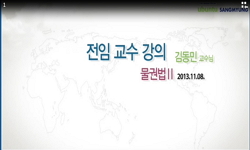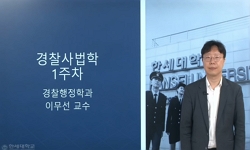It is a well-known fact that Rha Hye-seok has special meaning in the study of Yeom Sang-seob. However, existing discussions on the relationship between Yeom Sang-seob and Rha Hye-seok show conflicting aspects. Some argue that the frustration of first ...
http://chineseinput.net/에서 pinyin(병음)방식으로 중국어를 변환할 수 있습니다.
변환된 중국어를 복사하여 사용하시면 됩니다.
- 中文 을 입력하시려면 zhongwen을 입력하시고 space를누르시면됩니다.
- 北京 을 입력하시려면 beijing을 입력하시고 space를 누르시면 됩니다.
https://www.riss.kr/link?id=A106258191
-
저자
장두영 (서울대 기초교육원)
- 발행기관
- 학술지명
- 권호사항
-
발행연도
2019
-
작성언어
Korean
-
주제어
Yeom Sang-seob ; Rha Hye-seok ; “Madam E” ; real person ; real event ; fictionalizing ; novelist ; 염상섭 ; 나혜석 ; E부인 ; 실제 인물 ; 실제 사건 ; 허구화 ; 장편소설 작가
-
등재정보
KCI등재
-
자료형태
학술저널
-
수록면
211-240(30쪽)
-
KCI 피인용횟수
0
- DOI식별코드
- 제공처
-
0
상세조회 -
0
다운로드
부가정보
다국어 초록 (Multilingual Abstract)
Based on the similarities with “mourning”, this paper reaffirmed the previous discussion that “Madam E” is a work modeled after Rha Hye-seok. And this paper confirmed that Rha Hye-seok, who visited Seoul in the 1920s, met Yeom Sang-seob, and that what Rha Hye-seok had arranged for Yeom Sang-seob to match was used as the subject of the novel.
Next, this paper looked at the fictionalization of “Madam E”. When fictionalizing real persons or events, there is no other choice but to be transformed. It has been revealed that the author, unlike real facts, has fabricated his first love into a beautiful romance. Until the late 1920s, Rha Hye-seok was the person that Yeom Sang-seob missed, and this fact provides implications for understanding a new woman character in his works, which requires further study.
On the other hand, it is important that “Madam E” is a work that Yeom Sang-seob wrote around the time of his success as a novelist, gaining stability in life and getting married. In “Madam E”, the thoughts of art and life that Yeom Sang-seob felt at that time, such as relief from becoming a famous writer and gaining composure in life, and self-absorbed feeling of lowering the standard of work for popular readers, are found. And “Madam E” can be interpreted as a work written by a writer ahead of the wedding while clearing his thoughts and feelings about first love. But Yeom Sang-seob has distanced himself from Rha Hye-seok since the 1930s of her divorce, which seems to have led to “Mourning”. As such, “Madam E” is meaningful as a material that allows one to look into the author's personal history behind him and his thoughts on art at the time, and help reconstruct the relationship between Yeom Sang-seob and Rha Hye-seok.
It is a well-known fact that Rha Hye-seok has special meaning in the study of Yeom Sang-seob. However, existing discussions on the relationship between Yeom Sang-seob and Rha Hye-seok show conflicting aspects. Some argue that the frustration of first love led to Yeom Sang-seob 's misogyny and that it led to a negative view of the new woman, and that Rha Hye-seok was the person that Yeom Sang-seob missed. In this paper analyzed the work and their writings and memoirs written by acquaintances, under the assumption that “Madam E” is a material that helps us understand their relationship.
Based on the similarities with “mourning”, this paper reaffirmed the previous discussion that “Madam E” is a work modeled after Rha Hye-seok. And this paper confirmed that Rha Hye-seok, who visited Seoul in the 1920s, met Yeom Sang-seob, and that what Rha Hye-seok had arranged for Yeom Sang-seob to match was used as the subject of the novel.
Next, this paper looked at the fictionalization of “Madam E”. When fictionalizing real persons or events, there is no other choice but to be transformed. It has been revealed that the author, unlike real facts, has fabricated his first love into a beautiful romance. Until the late 1920s, Rha Hye-seok was the person that Yeom Sang-seob missed, and this fact provides implications for understanding a new woman character in his works, which requires further study.
On the other hand, it is important that “Madam E” is a work that Yeom Sang-seob wrote around the time of his success as a novelist, gaining stability in life and getting married. In “Madam E”, the thoughts of art and life that Yeom Sang-seob felt at that time, such as relief from becoming a famous writer and gaining composure in life, and self-absorbed feeling of lowering the standard of work for popular readers, are found. And “Madam E” can be interpreted as a work written by a writer ahead of the wedding while clearing his thoughts and feelings about first love. But Yeom Sang-seob has distanced himself from Rha Hye-seok since the 1930s of her divorce, which seems to have led to “Mourning”. As such, “Madam E” is meaningful as a material that allows one to look into the author's personal history behind him and his thoughts on art at the time, and help reconstruct the relationship between Yeom Sang-seob and Rha Hye-seok.
국문 초록 (Abstract)
우선 「추도」와의 유사성을 근거로 「E부인」이 나혜석을 모델로 하였다는 기존의 논의를 구체적으로 재확인하고, 1920년대 나혜석이 안동현에서 서울로 올라와 염상섭과 종종 만났던 일, 1927년 나혜석이 염상섭에게 결혼 소개를 주선했던 일 등 실제 사실을 소재로 활용하였음을 추가로 확인하였다.
다음으로 「E부인」의 소설적 허구화 양상을 살폈다. 실제의 인물과 사건을 소설화하는 과정에서 일정한 변형이 동반될 수밖에 없음에 착안한 것으로, 실제와는 달리 작가가 자신의 첫사랑을 아름다운 로맨스로 미화하였음을 알게 되었다. 즉 1920년대 후반까지 염상섭에게 나혜석은 그리움과 미련의 대상이었으며, 이러한 염상섭과 나혜석의 관계는 염상섭의 소설에 나타난 신여성 인물을 이해하는 데 시사점을 제공한다는 점에서 추후 추가적인 검토가 요구된다.
한편 「E부인」은 염상섭이 장편소설 작가로 성공하면서 생활의 안정을 얻어 결혼식을 올릴 무렵 쓴 작품이라는 점이 중요하다. 이렇게 볼 때 「E부인」에서는 유명 작가로 생활의 여유를 찾은 안도감과 대중 독자를 상대로 하여 작품 수준을 낮춘다는 자괴감 등 예술과 생활에 관한 당시 염상섭의 생각을 엿볼 수 있다. 또한 「E부인」은 결혼을 앞둔 염상섭이 첫사랑을 향한 감정을 정리하며 쓴 작품으로 읽을 수 있으며, 1930년 나혜석이 이혼한 후 공식적인 자리에서 그녀와 거리를 둔 것이 「추도」로 이어졌다고 볼 수 있다. 이처럼 「E부인」은 작가의 개인사적 이면과 예술에 관한 당시 작가의 생각을 들여다보고, 염상섭과 나혜석의 관계를 재구성하는 자료로서 의의가 있다.
염상섭 연구에서 나혜석의 존재가 각별한 의미를 지닌다는 것은 주지의 사실이다. 그러나 염상섭과 나혜석의 관계에 관한 기존의 논의는 엇갈리는 양상을 보인다. 나혜석을 향한 첫사랑이 ...
염상섭 연구에서 나혜석의 존재가 각별한 의미를 지닌다는 것은 주지의 사실이다. 그러나 염상섭과 나혜석의 관계에 관한 기존의 논의는 엇갈리는 양상을 보인다. 나혜석을 향한 첫사랑이 좌절된 경험으로 인해 염상섭에게 여성혐오의 시각이 생겼고, 이후 여러 작품에서 신여성을 향한 부정적 시선으로 이어졌다는 통설과 염상섭에게 나혜석은 그리움의 대상이었다는 반론이 있다. 이에 본고는 염상섭의 단편 「E부인」이 염상섭과 나혜석의 관계에 관한 견해를 정리하는 데 도움을 주는 자료라는 가정 아래 작품 분석은 물론 염상섭과 나혜석이 남긴 글과 주변의 회고 등을 검토하였다.
우선 「추도」와의 유사성을 근거로 「E부인」이 나혜석을 모델로 하였다는 기존의 논의를 구체적으로 재확인하고, 1920년대 나혜석이 안동현에서 서울로 올라와 염상섭과 종종 만났던 일, 1927년 나혜석이 염상섭에게 결혼 소개를 주선했던 일 등 실제 사실을 소재로 활용하였음을 추가로 확인하였다.
다음으로 「E부인」의 소설적 허구화 양상을 살폈다. 실제의 인물과 사건을 소설화하는 과정에서 일정한 변형이 동반될 수밖에 없음에 착안한 것으로, 실제와는 달리 작가가 자신의 첫사랑을 아름다운 로맨스로 미화하였음을 알게 되었다. 즉 1920년대 후반까지 염상섭에게 나혜석은 그리움과 미련의 대상이었으며, 이러한 염상섭과 나혜석의 관계는 염상섭의 소설에 나타난 신여성 인물을 이해하는 데 시사점을 제공한다는 점에서 추후 추가적인 검토가 요구된다.
한편 「E부인」은 염상섭이 장편소설 작가로 성공하면서 생활의 안정을 얻어 결혼식을 올릴 무렵 쓴 작품이라는 점이 중요하다. 이렇게 볼 때 「E부인」에서는 유명 작가로 생활의 여유를 찾은 안도감과 대중 독자를 상대로 하여 작품 수준을 낮춘다는 자괴감 등 예술과 생활에 관한 당시 염상섭의 생각을 엿볼 수 있다. 또한 「E부인」은 결혼을 앞둔 염상섭이 첫사랑을 향한 감정을 정리하며 쓴 작품으로 읽을 수 있으며, 1930년 나혜석이 이혼한 후 공식적인 자리에서 그녀와 거리를 둔 것이 「추도」로 이어졌다고 볼 수 있다. 이처럼 「E부인」은 작가의 개인사적 이면과 예술에 관한 당시 작가의 생각을 들여다보고, 염상섭과 나혜석의 관계를 재구성하는 자료로서 의의가 있다.
참고문헌 (Reference)
1 임종국, "흘러간 성좌(2)" 국제문화사 1966
2 윤범모, "화가 나혜석" 현암사 2005
3 최은희, "한국 개화여성 열전 추계 최은희 전집 4" 조선일보사 1991
4 염상섭, "추도"
5 "조선일보"
6 하타노 세츠코(波田野節子), "일본 유학생 작가연구" 소명출판 2013
7 이상경, "인간으로 살고 싶다 : 영원한 신여성 나혜석" 한길사 2000
8 이덕화, "염상섭의 향기로운 추억의 여인, 나혜석" 나혜석학회 7 : 2015
9 김경수, "염상섭과 현대소설의 형성" 일조각 2008
10 김영민, "염상섭 초기 산문 연구" 대동문화연구원 (85) : 461-498, 2014
1 임종국, "흘러간 성좌(2)" 국제문화사 1966
2 윤범모, "화가 나혜석" 현암사 2005
3 최은희, "한국 개화여성 열전 추계 최은희 전집 4" 조선일보사 1991
4 염상섭, "추도"
5 "조선일보"
6 하타노 세츠코(波田野節子), "일본 유학생 작가연구" 소명출판 2013
7 이상경, "인간으로 살고 싶다 : 영원한 신여성 나혜석" 한길사 2000
8 이덕화, "염상섭의 향기로운 추억의 여인, 나혜석" 나혜석학회 7 : 2015
9 김경수, "염상섭과 현대소설의 형성" 일조각 2008
10 김영민, "염상섭 초기 산문 연구" 대동문화연구원 (85) : 461-498, 2014
11 염상섭, "염상섭 전집" 민음사 1987
12 김윤식, "염상섭 연구" 서울대학교출판부 1987
13 김종균, "염상섭 연구" 고려대학교출판부 1974
14 장두영, "염상섭 소설의 내적 형식과 탈식민성" 태학사 2013
15 최은희, "여성 전진 70년 : 초대 여기자의 회고 추계 최은희 전집 5" 조선일보사 1991
16 에드몽 로스탕(E. Rostand), "시라노" 열린책들 2008
17 "삼천리"
18 "삼광"
19 양주동, "문·주회상기: 1920년대의 염상섭" 1963
20 "동아일보"
21 "기독청년"
22 김연숙, "‘羅惠錫’의 再現과 自己敍事 - 廉想涉, 咸貞任의 小說을 중심으로 -" 한국어문교육연구회 43 (43): 211-236, 2015
23 염상섭, "E부인"
24 조용만, "30년대의 문화계: 염상섭"
25 김경수, "1차 留學時期 廉想涉 文學 硏究" 한국어문교육연구회 38 (38): 293-319, 2010
동일학술지(권/호) 다른 논문
-
1900년대 여성 필자들의 공적 글쓰기 양상 - 『자선부인회잡지』를 중심으로
- 한국현대문예비평학회
- 장기영
- 2019
- KCI등재
-
미당 서정주의 「밀어(密語)」 자세히 읽기 - 시의 리듬을 중심으로
- 한국현대문예비평학회
- 박수민
- 2019
- KCI등재
-
- 한국현대문예비평학회
- 장은영
- 2019
- KCI등재
-
문덕수 초기시의 시어 변이와 상징성 연구 - 칸단스키의 추상 원리에 의한 상징어를 중심으로
- 한국현대문예비평학회
- 김예태
- 2019
- KCI등재
분석정보
인용정보 인용지수 설명보기
학술지 이력
| 연월일 | 이력구분 | 이력상세 | 등재구분 |
|---|---|---|---|
| 2026 | 평가예정 | 재인증평가 신청대상 (재인증) | |
| 2020-01-01 | 평가 | 등재학술지 유지 (재인증) |  |
| 2017-01-01 | 평가 | 등재학술지 유지 (계속평가) |  |
| 2013-01-01 | 평가 | 등재학술지 유지 (등재유지) |  |
| 2010-01-01 | 평가 | 등재학술지 유지 (등재유지) |  |
| 2007-01-01 | 평가 | 등재학술지 선정 (등재후보2차) |  |
| 2006-07-07 | 학술지명변경 | 한글명 : 한국문예비평학회 -> 한국문예비평연구 |  |
| 2006-01-01 | 평가 | 등재후보 1차 PASS (등재후보1차) |  |
| 2005-01-01 | 평가 | 등재후보학술지 유지 (등재후보1차) |  |
| 2003-01-01 | 평가 | 등재후보학술지 선정 (신규평가) |  |
학술지 인용정보
| 기준연도 | WOS-KCI 통합IF(2년) | KCIF(2년) | KCIF(3년) |
|---|---|---|---|
| 2016 | 0.42 | 0.42 | 0.44 |
| KCIF(4년) | KCIF(5년) | 중심성지수(3년) | 즉시성지수 |
| 0.41 | 0.43 | 0.823 | 0.1 |




 KCI
KCI KISS
KISS






